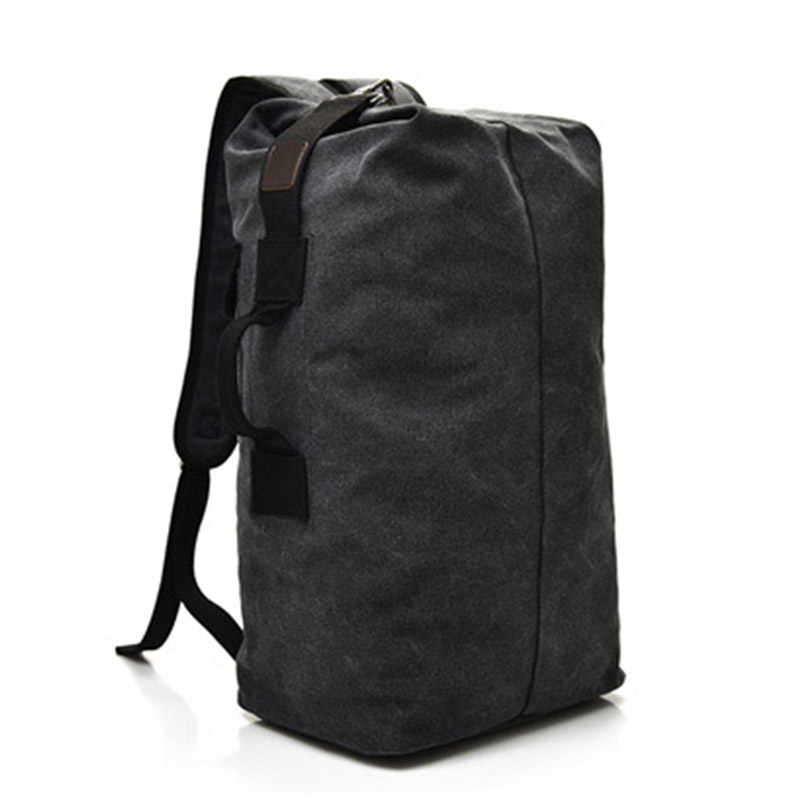Over 7000 sq miles of mountains, rivers, forests, and farms dotted with postcard villages and opulent estates: the Hudson Valley is so vast, you need a car to see it all.
Unlike neighboring NYC, public transit isn’t readily available throughout the region. Buses and trains stop in large towns, but driving is the only way to reach some of the Hudson Valley’s best hikes, historic sites, and tiny hamlets.
Luckily, the region’s roads are a driver’s dream. Well-maintained parkways and scenic routes abound, and as long as you know what to watch out for, you can expect smooth sailing all the way to Albany. Animal crossings are common between dawn and dusk, and traffic jams clog Westchester as weekenders return to Manhattan on Sunday afternoons. Winter storms create icy driving conditions, and summer holidays get crowded with visitors.
But don’t let any of this deter you from hitting the highway – the Hudson Valley is an all-season Elysium. Hop behind the wheel to see it for yourself on these six stunning road trips.
From artsy towns to blooming fall foliage, explore the beauty of the Hudson Valley. Getty Images
1. Cruise the Taconic State Parkway to see New York’s changing landscapes
White Plains–Chatham; 105 miles
When Franklin Delano Roosevelt proposed the Taconic State Parkway in the 1920s, he imagined a scenic route where city dwellers could trade NYC for the Hudson Valley’s east side.
The result is a two-lane lesson in New York’s many identities. There’s car-packed White Plains, the hilly Hudson Highlands and Columbia County’s rural pastures. The parkway, listed on the National Register of Historic Places, is a road tripper’s delight: snaking expanses work harmoniously with the landscape, while state parks and picturesque towns offer intriguing stop-offs.
But beware of state troopers – drivers regularly speed on the parkway, and cops aren’t shy when doling out tickets.
The journey begins where the Bronx River Parkway ends, and within 30 minutes, the suburbs morph into Fahnestock State Park – a 14,000-acre wilderness with hiking trails galore. For an FDR-inspired detour, head 20 minutes east to the former president’s estate in Hyde Park, where he was born and buried.
Public green spaces proliferate as the road continues north, but Lake Taghkanic State Park and its 168-acre swim spot get a gold star for sunny summer excursions. Driving this truck-and-toll-free parkway takes roughly two hours. Allow half a day to explore nearby attractions.
2. The Hudson River’s west side is a scenic drive for art lovers
Nyack–Kingston; 71 miles
Follow Route 9W as it hugs the Hudson River’s western banks for a ride to artsy outposts and historic towns. The drive takes under two hours, but plan a full day to appreciate the sights.
The road’s first noteworthy destination is in Nyack – where artist Edward Hopper (Nighthawks, 1942) was born and raised. Explore his childhood home to get a glimpse of the man behind the voyeuristic paintings, then return to Route 9W as it passes Bear Mountain and salutes West Point, the country’s oldest continuously occupied military post.
Next, take a detour on Route 218 (also called Storm King Highway) for an impressive stretch of hairpin turns along Storm King Mountain. While views from the road are jaw-dropping, nothing beats the panorama hikers see from the mountain’s peak.
If you don’t stretch your legs on Storm King, drive to its eponymous art center – a 500-acre sculpture garden that blends massive modern artwork with the surrounding landscape. Ogle pieces by icons like Richard Serra and Louise Bourgeois before continuing to Kingston, located one hour north.
Kingston, settled by Dutch colonizers in 1652, is filled with enough historic architecture and cute shops to warrant an overnight stay. Hotel Kinsley – a boutique hotel spread across four buildings dating from the 17th to 19th centuries – is a sleek spot to rest your head.
Wander around spectacular Kykuit, a summer home built for John D. Rockefeller in 1913. Shutterstock
3. Explore Gilded Age mansions along the Hudson River’s east side
Tarrytown–Hudson; 95 miles
Over a century before Brooklyn hipsters gentrified the Hudson’s east side, Manhattan’s upper crust built Gilded Age homes along the riverbanks.
Today, the remaining estates create a string of architectural pearls from Westchester to Columbia County. Most of these sites are near Route 9 – a road that whizzes through pastoral landscapes while inspiring some serious real estate envy.
Lyndhurst Mansion, a Gothic Revival masterpiece built in 1838 for railroad tycoon John Gould, makes a dramatic first stop on this trip. Spin around the immaculate 67-acre grounds before driving through Sleepy Hollow, a village made famous by Washington Irving’s 19th-century saga of the Headless Horseman.
Kykuit, a palatial 40-room summer home built for oil baron John D. Rockefeller in 1913, overlooks the village from Pocantico Hills.
Continue on Route 9 until Peekskill, then take a scenic detour along Route 202 and Route 9D for cliffside views along the Hudson. Boscobel House and Gardens, a 19th-century mansion painted imperial yellow, appears as the road heads into Cold Spring.
Reconnect with Route 9 after Wappinger Falls and zoom north to Vanderbilt Mansion and the Staatsburgh State Historic State – two Beaux-Arts beauties designed by McKim, Mead and White in the late 1890s.
To finish the gilded home tour, take Route 9G toward Hudson and stop at Olana. This Gothic-Moorish mansion was the home of Frederic Church, a celebrated landscape artist from the 19th century whose paintings depicted the Hudson Valley as America’s Eden.
The drive alone takes roughly three hours; allow an entire day to tour several estates.
The Seven Lakes Drive takes about 30 minutes without stops. Tetyana Ohare/Shutterstock
4. Peep fall foliage on Seven Lakes Drive
Sloatsburg–Perkins Memorial Tower; 20 miles
Cruising the length of Seven Lakes Drive takes 30 minutes without stops, but if you like outdoor adventures, expect it to become a half-day affair.
On top of passing seven pristine lakes, the drive also boasts access to top-notch hikes while connecting Harriman State Park to Bear Mountain State Park. Although the journey is idyllic year-round, leaf peepers will appreciate this journey most in autumn, when tree-lined lakes reflect fall’s foliage.
Start the trip by fueling up in Sloatsburg, a charming village with tasty eateries like the Village Blend (come for coffee and croissants) and Seven Lakes Station (a craft beer-and-burger joint).
Lake Sebago, Harriman State Park’s largest lake, appears first, followed by a new blue pool around nearly every corner. Lake Tiorati, the fifth lake along the route, is favored thanks to its public beach, campsites, and Appalachian Trail access. Park by any of the lakes to stroll along their shores. If crowds are scarce, you might spot a white-tailed deer grazing near the water.
For the trip’s grand finale, drive to Perkins Memorial Tower in Bear Mountain State Park for expansive views extending to NYC. The road to the lookout is open from April to late November. Even if the road is closed, it’s possible to make it to the tower: the Appalachian Trail appears again at this not-to-miss mountaintop.
5. Head to the Hudson Valley’s eastern edge for a cozy winter getaway
Pawling–Millbrook–Millerton; 40 miles
Winter doldrums aren’t ideal for long-range road trips, but they’re perfect for visiting cozy towns tucked into snowy surrounds. This manageable one-hour drive travels through farms and forests while stopping in Pawling, Millbrook and Millerton – three of the cutest hamlets on the Hudson Valley’s eastern border.
Begin on Pawling’s buzzy Main Street. Find a new novel at Book Cove, enjoy a delicious pastry at Dancing Bear Cafe, and then drive north to Route 55, which bisects the Appalachian Trail. Catch Route 82 as it shoots north to Millbrook and park on Franklin Avenue. Make sure there’s room in your trunk for impulse purchases – Millbrook’s antique stores might incite the urge to give your home a hygge upgrade.
Route 44 leads from Millbrook to Millerton – the Hudson Valley’s eastern hub for stylish New Yorkers. Visit on a weekend to join crowds pouring in and out of the trendy shops along Main Street.
Irving Farm serves quality roasts to coffee connoisseurs, Westerlind sells upscale outdoor gear and market goods, and Oakhurst Diner delivers griddle-cooked comfort food.
A road trip down both sides of the Hudson river reveals a number of quirky towns, such as the famed Sleepy Hollow. Getty Images
6. Trace the Hudson River on an epic three-day itinerary
Nyack–Saugerties–Hudson–Beacon–Tarrytown; 199 miles
Spend a weekend driving up and down both sides of the Hudson River to awe at the landscape and explore its quirky towns. This round-trip itinerary amounts to four hours of car time – a doable day drive – but consider spreading it out over a long weekend. The Hudson Valley is best when savored slowly.
On day one, drive two hours north along Route 9W through Nyack, around Bear Mountain, and into Kingston. After rolling through Four Corners – the only American intersection where all four buildings predate the Revolutionary War – continue north to sleepy Saugerties.
Hike out to the town’s lighthouse, built in 1869, to see where Esopus Creek meets the Hudson. The lighthouse doubles as a B&B – a storybook spot to spend the night.
Day two takes you further north to Catskill, then across the river via the Rip Van Winkle Bridge. Spend a full day in Hudson, a colorful enclave known for its art galleries, antique stores, and yummy restaurants lining Warren Street.
On day three, drive back down the Hudson along Route 9 to Beacon, an artsy town full of ex-Brooklynites. Tool around massive installations at Dia:Beacon – a former Nabisco factory turned modern art powerhouse – before walking down Main Street to hang with the locals.
Finish the trip by zipping through Hudson Highlands State Park (home to the region’s most rewarding hikes) and end in Tarrytown. Nyack, the first stop on the journey, awaits across the Mario M. Cuomo Bridge.
This article was first published Mar 16, 2022 and updated Sep 12, 2024.








